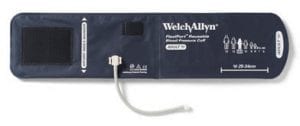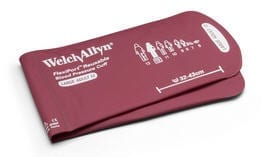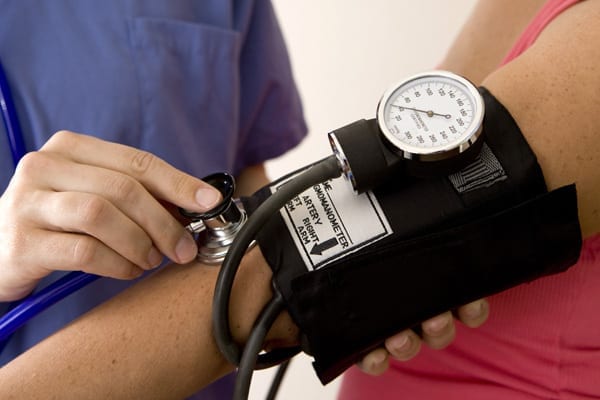Have you ever had your blood pressure taken and were surprised to discover that it was higher or lower than you expected?
Did you know that simple variations can cause your blood pressure reading to deviate between 5 and 50 points? Beware… the most common error when measuring blood pressure is improper blood pressure cuff size.
Whether you take your own blood pressure at home or rely on a clinician to do so, using the wrong size cuff happens frequently. Since your blood pressure reading predicts your risk of stroke, heart disease and renal failure and assesses your need for hypertensive medications, you want to be sure the reading isn’t artificially low or elevated.
Why Cuff Size Matters
An essential part of measuring a blood pressure involves compressing the artery, so that no blood flows through it. The “cuff” is the part that wraps around your arm and the bladder inside inflates to apply the compression. It is CRITICAL that the cuff is the right size.
When the Cuff is Too Small
 When the cuff size is too small, your blood pressure will be artificially HIGH — and can deviate by as much as 50 mmHg. This happens because the undersized cuff may not be able to completely close off the artery. It has to inflate a lot and you’ll get a higher reading. The result: a false diagnosis and over-treatment. It’s not uncommon that some obese people are incorrectly diagnosed with high blood pressure when it is actually normal.
When the cuff size is too small, your blood pressure will be artificially HIGH — and can deviate by as much as 50 mmHg. This happens because the undersized cuff may not be able to completely close off the artery. It has to inflate a lot and you’ll get a higher reading. The result: a false diagnosis and over-treatment. It’s not uncommon that some obese people are incorrectly diagnosed with high blood pressure when it is actually normal.
When the Cuff is Too Large
 When the cuff size is too big, your blood pressure will be artificially LOW — but may not deviate as much as from the error of using a cuff that’s too small. It will read low because the bladder in the cuff will overlap (covering more than 100% of your arm), so the cuff ends up inflating on itself.
When the cuff size is too big, your blood pressure will be artificially LOW — but may not deviate as much as from the error of using a cuff that’s too small. It will read low because the bladder in the cuff will overlap (covering more than 100% of your arm), so the cuff ends up inflating on itself.
In other words, it will cut off the supply of blood too easily, and you’ll get a lower reading. Taking your blood pressure with a cuff that’s too large is dangerous because you and your doctor may think your blood pressure is normal and not as high as it actually is.
NOTE: When you’re exercising, your blood pressure is expected to rise, but the wrong size cuff could produce a reading that’s low or too high which could be problematic and symptomatic of cardiovascular disease.
Why This Mistake Occurs So Frequently
Using the wrong size cuff is mainly due to a laxity in protocol and/or by the clinician or a lack of emphasis on proper blood pressure cuff sizing in medical training. As a result, neglecting cuff size becomes the standard practice in the everyday work environment, i.e., in doctors’ offices and in both outpatient and inpatient hospital facilities.
Measuring for Cuff Size
Use a flexible measuring tape (not metal) and measure the circumference of your arm at about the midpoint between your shoulder and elbow.
Allow your arm to relax, and hang down at the side of your body. If you don’t have a measuring tape, you can also use a piece of string or ribbon. Your cuff size will be determined by your arm size.
![]() Karen’s Fit Tip: After measuring your arm, MEMORIZE ITS SIZE! Whenever you get your blood pressure taken, ask the clinician the cuff’s range (it’s printed on the cuff).
Karen’s Fit Tip: After measuring your arm, MEMORIZE ITS SIZE! Whenever you get your blood pressure taken, ask the clinician the cuff’s range (it’s printed on the cuff).
Blood pressure cuffs do not come in uniform sizes, so you have to know your arm size. You may be an Adult Small in one cuff, but that could vary depending on the manufacturer.
Up Next! … 5 Factors That Can Affect Blood Pressure Readings (i.e., arm position, posture, and your bladder)





